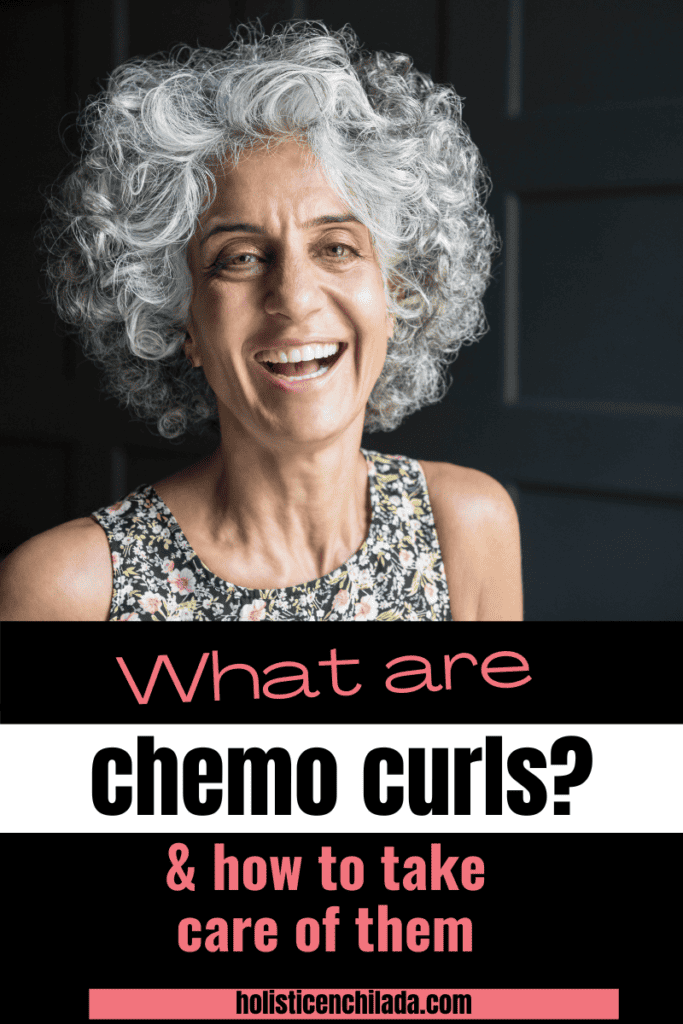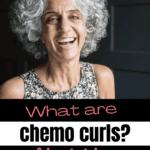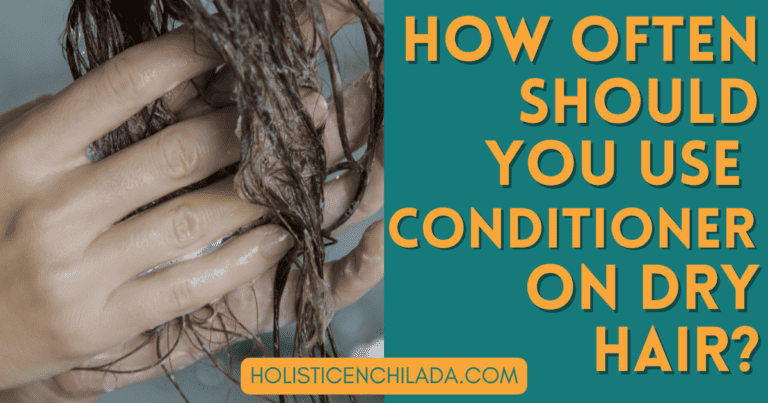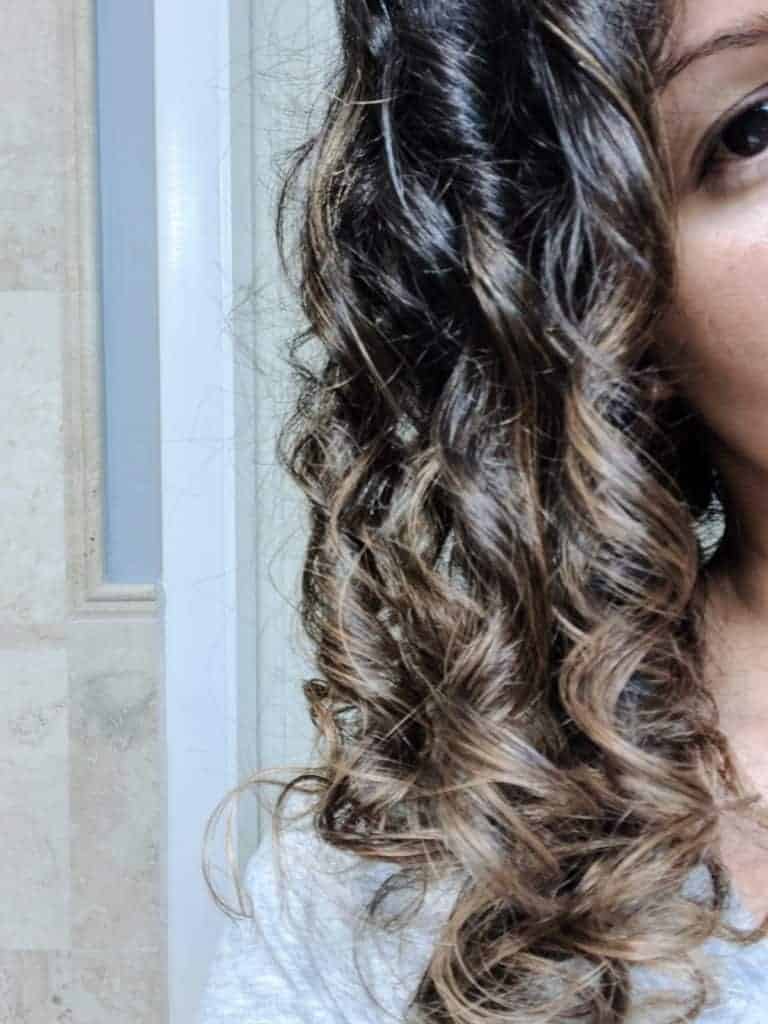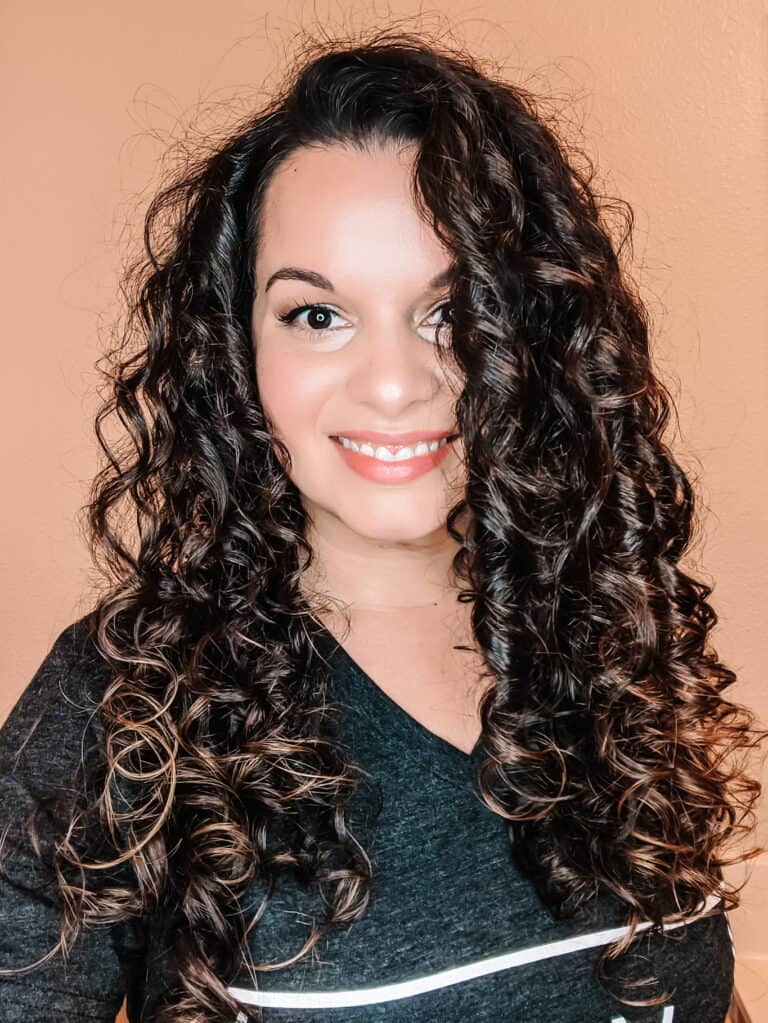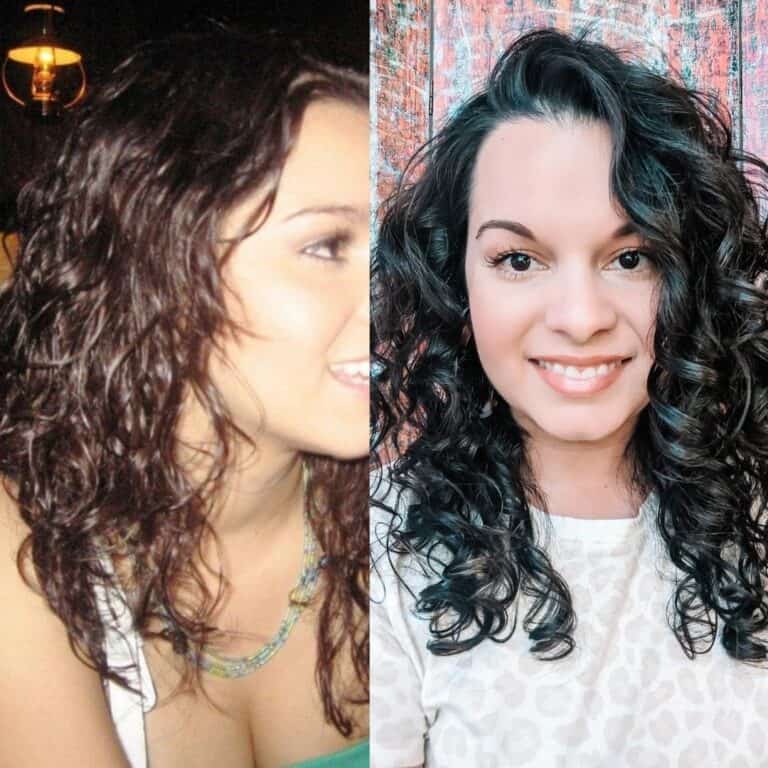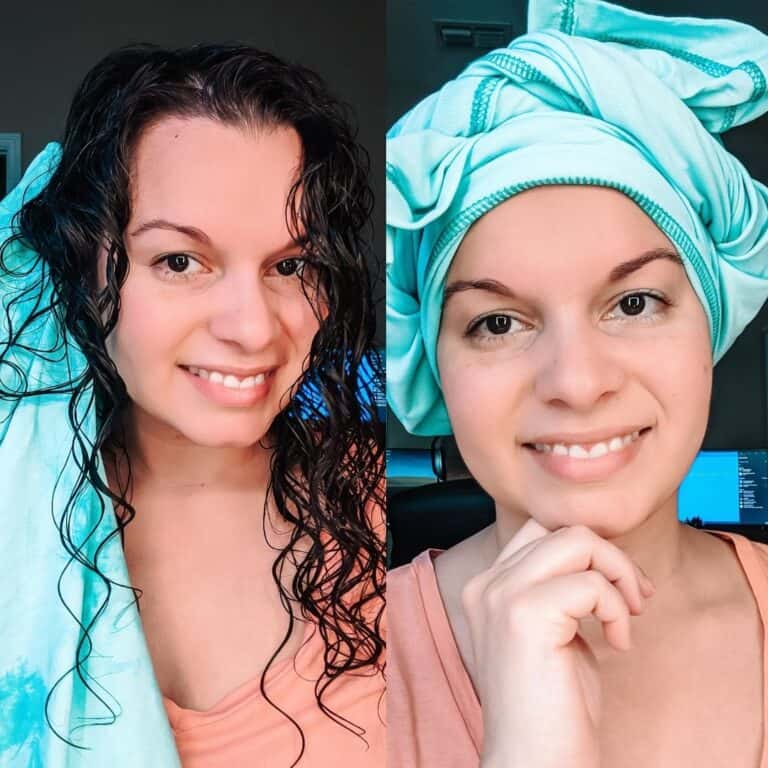What Are Chemo Curls? How to Take Care of Them
This post may contain affiliate links, and I will earn a commission if you purchase through these links. Please read the disclosure policy for more details.
Chemotherapy treatment is effective at destroying cancer cells, but it can also affect healthy cells in your body, including your hair follicle cells.
One of the most common side effects of chemotherapy is hair loss. When the hair returns, it may temporarily have a different color, thickness, or texture, and when the regrowth is curly, this is often known as chemo curls.
If you’re going through cancer treatment or about to start chemotherapy, it’s essential to know how to care for your hair and scalp through these changes. Your regular hair care products and styling tools will be too harsh for your sensitive scalp and delicate new strands.
Our guide to caring for chemo curls will help you understand what causes the changes to your hair, and we’ll also share some helpful tips for gentle hair care and styling.
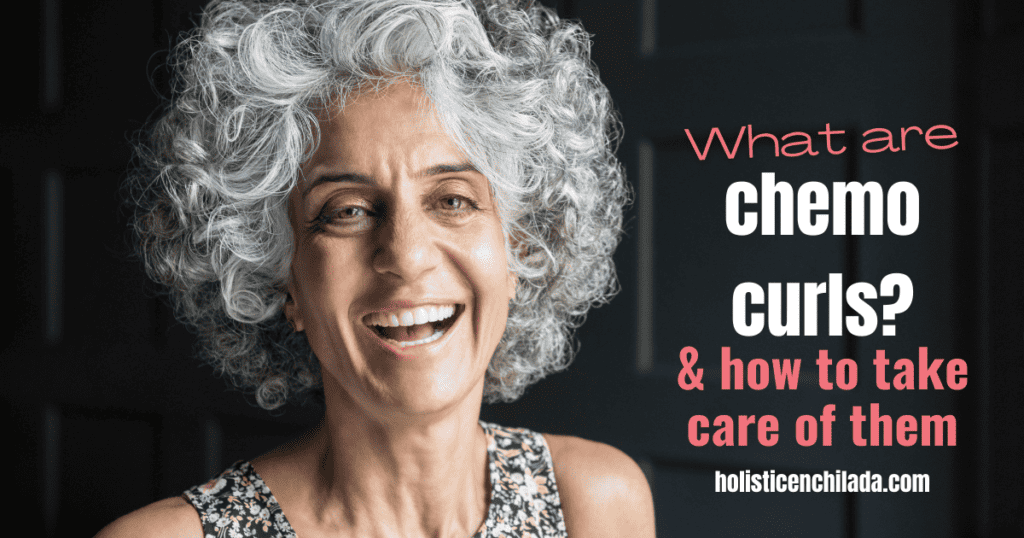
What Are Chemo Curls?
Many people find their hair breaks more easily or falls out during chemotherapy. This hair loss generally starts within the first 1-3 weeks of treatment and can continue for a few weeks after your therapy ends1.
When your hair begins to grow back, the texture of your hair may be different. Your hair may be wavy or curly, even if you had straight hair before. A 2019 study of breast cancer patients with six months of regrowth showed that 63% said their hair had become wavy or more wavy than before, although there was no change in 25% of the patients2.
These changes are known as chemo curls. For most people, they are a temporary change while your body recovers from the effects of the chemotherapy.
What Causes Chemo Curls?
Chemotherapy is a treatment where a drug or combination of drugs is administered orally or through an IV. Chemotherapy treatments work by destroying the rapidly dividing cancer cells, but they can’t tell the difference between cancerous and healthy cells. This means they can also affect other cells that divide quickly3 like your hair roots, nails, and skin.
Your hair follicles are some of the fastest-growing cells in your body, so hair cells are often affected by chemotherapy treatment. This can cause a type of hair loss called anagen effluvium4. You may notice this affects hair on other parts of your body, and the chemotherapy drugs can also make your scalp feel tender.
Everyone reacts differently to chemotherapy, and hair loss varies depending on factors like your age, health history, and hormones. One of the peer-reviewed studies into chemotherapy related hair loss found that 65% of cancer patients who receive chemotherapy will see changes to their hair. These changes vary depending on the type of chemotherapy drugs you receive5.
The effects on your hair follicles can last beyond the end of your treatment. They can cause changes in color and texture as your hair grows back after chemotherapy, which can include chemo curls.
What Do Chemo Curls Look Like?
When your hair growth begins again after chemo treatment, you may notice changes from your usual hair texture and color. You might experience some loss of pigment so your new hair color may be white, gray, or some other color.
You can also see changes in texture when your hair grows back. It may be curlier than before your hair loss, so you may have wavy hair or chemo curls. Your strands may also be thicker, coarser, or even finer than before.
How Long Do Chemo Curls Last?
It takes time to recover from chemotherapy, and everybody recovers at a different pace.
In the early stages of recovery, your hair may grow back very slowly, which can be frustrating. It can take up to a year for your hair to grow back while your body focuses on recovering from the effects of the drugs and generating new healthy cells.
You might prefer to trim away the new hair growth regularly and keep your hair short through the chemo curl stage. On the other hand, watching your post chemo hair growing might help you feel you are moving further past your treatment.
How Chemotherapy Affects Hair Growth
The effects on your hair will depend on the drug or combination of chemotherapy drugs involved in your therapy. Not all forms of chemotherapy cause hair loss, and if you do experience hair fall, you might not experience changes as it grows back.
For most people, chemotherapy induced hair loss is temporary, and regrowth starts within the first few months after treatment ends5. Here’s what you might experience while you wait for your hair to grow back:
- Patchy, fuzzy hair will start to appear around 2-3 weeks after chemotherapy ends.
- Over the next 1-2 months, your natural hair regrowth will get thicker as the drugs slowly leave your body. However, it may have a different texture and might still be patchy.
- 2-3 months after your treatment ends, hair may cover most of your head with a few bald patches. Texture changes may make it behave differently than before your hair loss.
- 6 months after you’ve completed chemotherapy, you will probably have hair that’s a few inches long. You’ll be able to style your hair, which will cover any remaining bald patches.
- One year after chemotherapy, your hair may be several inches long and will probably be back to normal.
Gentle Hair Care Tips for Chemo Curls
During and after chemotherapy treatment, your hair and scalp will need extra-gentle treatment:
Use a gentle shampoo and conditioner
Use a mild, pH-neutral shampoo to gently wash your hair with warm water, and apply a gentle conditioner afterward. You can also use a leave in conditioner once or twice a week to hydrate your delicate strands.
Avoid using hot water, which can be painful and may cause dandruff. A mild shampoo without sulfates or strong fragrances, like a baby shampoo, will be gentle on your chemo curls and tender scalp.
Avoid blow drying
Pat your hair dry with an absorbent towel or a large cotton t-shirt and leave it to air dry to help prevent frizz. If you want to use your hair dryer, use the lowest possible setting.
Brush your hair gently
A wide tooth comb or soft bristle brush will be gentle on your fragile strands. If your chemo curls tangle easily, a ‘wet brush’ detangler will be the most comfortable way to clear the tangles.
Avoid harsh styling products
Products like gels and sprays often contain alcohols that can dry and irritate your scalp. Styling products designed for curly hair, like oils and creams, will be more moisturizing.
Protect your tender scalp
Covering your head with a hat or scarf before going out in the sun is always a good idea. Alternatively, you can use a high SPF sunscreen to protect against sun damage.
Massage your scalp
Gently massaging your scalp can stimulate your hair follicles and encourage hair regrowth. It will also remove any dry skin, as dandruff is a common side-effect of chemotherapy. Always treat your scalp as gently as possible in this early stage of recovery.
Styling Tips for Embracing and Enhancing Your Chemo Curls
If your hair has grown back curly after chemotherapy, you might find your hair responds differently to styling. Working with your new growth is better than fighting against it.
Keep it short
Your hair might have a different texture, and your scalp might still feel sensitive, so shorter cuts will be easier to style. If you’re really struggling with your chemo curls, a simple 1-inch buzz cut may be the easiest way to style your post-chemotherapy locks.
Avoid chemical treatments
Chemical treatments are too harsh for your fragile post-chemo curls and tender scalp. It’s better to wait until your hair is three inches long and always do a skin patch to check for any new allergic reactions.
Have regular trims
You might be reluctant to cut your new hair, but monthly trims will get rid of the damaged hair and restore its normal texture sooner.
Moisturize regularly
Penetrating oils like coconut oil or almond oil are ideal for delivering essential hydration into the hair shaft, helping to keep it looking moisturized and healthy.
Style without heat
It’s important to protect your fragile locks from direct heat. Using the LOC method to layer oil and styling gel or cream on your curls will help them look great without the harsh heat of blow dryers or hot styling tools.
If you really want to style your hair with heat, hot rollers are gentler than a curling iron or flat iron.
Enjoy accessorizing
Headbands, clips, and barrettes can all help keep your post-chemo locks looking neat and stylish.
FAQs
If you would like more info about how chemotherapy affects a cancer patient’s hair, these frequently asked questions may help.
Are Chemo Curls Permanent?
These changes in hair texture are not permanent for most people. It can take two or three months for your hair to start growing back after the end of your treatment, and your hair will likely return to its normal texture after a year of regrowth.
Can I Color or Perm My Hair With Chemo Curls?
Chemical treatments like perms and colors can feel harsh on your hair and scalp. It can help to wait until your hair is at least three inches long before coloring or perming it.
If your scalp is still tender after chemotherapy, it’s better to wait until it has recovered before you color or perm your hair.
Does Everyone Undergoing Chemotherapy Experience Changes in Hair Texture?
Although changes in hair texture are very common, not all chemotherapy treatments cause hair loss and not everyone experiences these hair changes afterwards.
Conclusion
If you’re about to start chemotherapy or are going through treatment now, it’s natural to be worried about the changes in your appearance like hair loss or changes in hair texture.
Learning to accept your changing body is one of the most challenging aspects of a cancer diagnosis. It’s important to learn how to care for your hair regrowth and to remember that chemotherapy is an effective part of your cancer treatment.
Chemo curls may be an unexpected side effect of chemo treatment, but they’re temporary for most people and the practical advice in this guide will help you care for them. Over time, your hair should return to normal as your body recovers from your treatment.
References
- 1 – https://www.ncbi.nlm.nih.gov/books/NBK547552/
- 2 – https://www.ncbi.nlm.nih.gov/pmc/articles/PMC6326423
- 3 – https://www.cancer.org/cancer/managing-cancer/treatment-types/chemotherapy/how-chemotherapy-drugs-work.html
- 4 – https://www.ncbi.nlm.nih.gov/books/NBK482293/
- 5 – https://www.ncbi.nlm.nih.gov/pmc/articles/PMC5540831/
